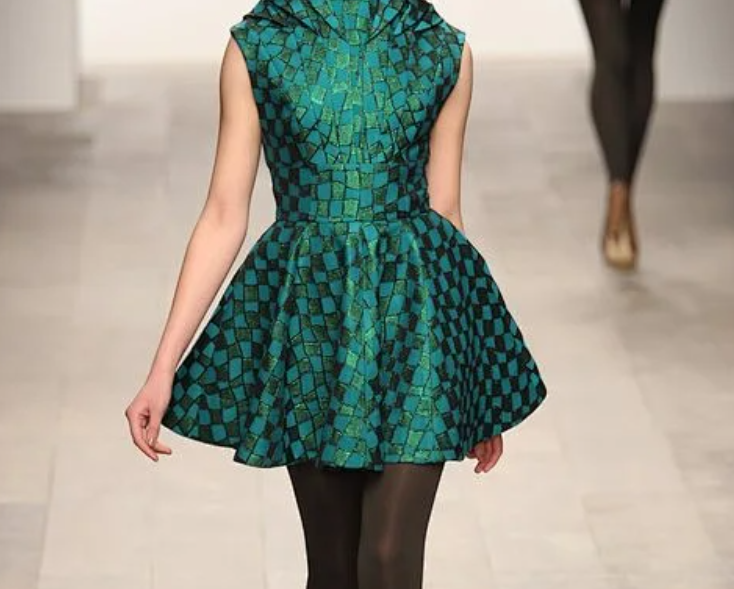
When the Artist's Jewelry: From Calder to Koons opened at the Museum of Decorative Arts, it was not only a curated exhibition, but also a peak in the burgeoning art jewelry market. Curated by renowned art jewelry collector Diane Venet and Karine Lacquemant, assistant curator in the Department of Modern Art at the Museum of Decorative Arts, the special exhibition features 258 works by 150 different artists.
For the first time, many of the jewels will be displayed alongside original works by the same artist, a rare exhibition made possible by the museum's extensive collection and Venet's extensive contacts in the art world.
Interior architect Antoine Plazanet teamed up with graphic design firm Ericand Marie to juxtate jewelry with other types of creation, which highlights their intellectual and artistic value.
The collector continued: "Artists make jewelry mostly for the women they love or for their friends, but always in connection with their main artistic creation. The jewelry is not a mini version of their art, but it's definitely inspired by their art, so you can immediately recognize who made it when you see it."
Venet's selection includes the tapestries of Niki de Saint Phalle, as well as the artist's Nana series of brooches, which are wearable versions of the colorful, buxomous women Phalle began producing in 1964, some measuring up to five meters tall.
Also on display is Wim Delvoye's tattooed pig skin paired with a portrait of Jesus, from which he created the "Twisted Jesus" necklace, which has eight pendants with distorted portraits, a very different presentation from the original.
While it may come as a surprise to many to discover that other famous artists including Pablo Picasso,Lucio Fontana and Andy Warhol also design jewelry, the market for wearable art has grown rapidly in the past few years, doubling auction sums and selling at prices higher than expected.
Exceptional cases include Salvador Dali's "Eye of Time" brooch and Alexander Calder's necklace, both selling for more than $1 million. LouisaGuinness, which runs a gallery in London with one of the largest collections of artist-made jewellery, says that artist jewellery isa popular item partly because of generational differences, but also because collectors and galleries are constantly actively promoting it through exhibitions, art fairs and publications.
Guinness explains: "A lot of the jewellery was made between the 1940s and 1970s and the owners have passed it on to the next generation." She points to a stack of wooden boxes containing brooches designed by Max Ernst that she recently acquired.
"The heirs don't want the jewels, they want to sell them, that's why the collection is here." So when a seller comes to me or shows up at an auction."
Imogen Kerr, associate director of Impressionist and modern art at Christie's, believes that the growth of the artist jewelry market is closely related to the public's preference for art other than traditional painting and sculpture.
"This very modern audience, looking at these pieces and thinking about how to wear art as jewelry, people are looking at the intersection of art and design, the intersection of different approaches, and can appreciate the art being presented in an applied way," Kerr said.
This appreciation of art has been on display in the fashion world since at least 1911, when the French fashion designer Paul Poiret commissioned brutalist Raoul Dufy to make woodcuts for his fabrics, and commercial collaborations of this kind have flourished in recent years.
In 2017, Louis Vuitton used Jeff Koons' master collection; Andres Serrano with Supreme; Unskilled Worker's illustration collaboration with Angelica Hicks on the Gucci runway, and Sterling Ruby's ongoing creative collaboration with Calvin Klein creative director Raf Simons. The symbiotic relationship between art and fashion is getting more attention, perhaps because consumers are seeking exclusive limited editions and capsule collections as a way to express their personal style.
At the same time, designers and consumers are desperate to find new territory. "The fashion and design world is running out of ideas and you have to have more input," Guinness says.
She has noticed an important shift in industry attitudes. "They used to not accept or know much about the field of artist jewelry, and now they are like sponges, absorbing ideas from artists who push the boundaries of traditional design."
Jewelry created by artists has appeared on the catwalk, and in January 2017 Maria GraziaChiuri ordered Dior haute couture uniforms using Claude Lalanne's designs, Victoria Beckham, meanwhile, used Emily Young's jewellery for her Autumn/Winter 2017 collection (all of the jewellery was lent by Guinness).Jewelry made by artists is sought after because of its uniqueness and design concept and is therefore careful not to produce in large quantities, although some characteristics are similar to those of the fashion industry.
"We have jewelry to fit everyone's budget," says Elisabetta Ipriani, who commissions jewelry from modern artists through her London gallery.
Her jewellery is created by artists such as Ai Weiwei, Enrico Astellani and Adel Abdessemed, with prices ranging from £1,000 to more than £100,000. "If you have the money, the personality and the intellect, this is the jewelry for you."
This idea chimes with Guinness, who believes that consumers still need some education about the value of artists' jewelry.
She points out that one of the things that makes her angry is when someone comes to the gallery with a £20,000 Hermes bag and then says they can't afford a £5,000 piece of jewellery by Anish Kapoor. "Then, I say, sell your bag."

